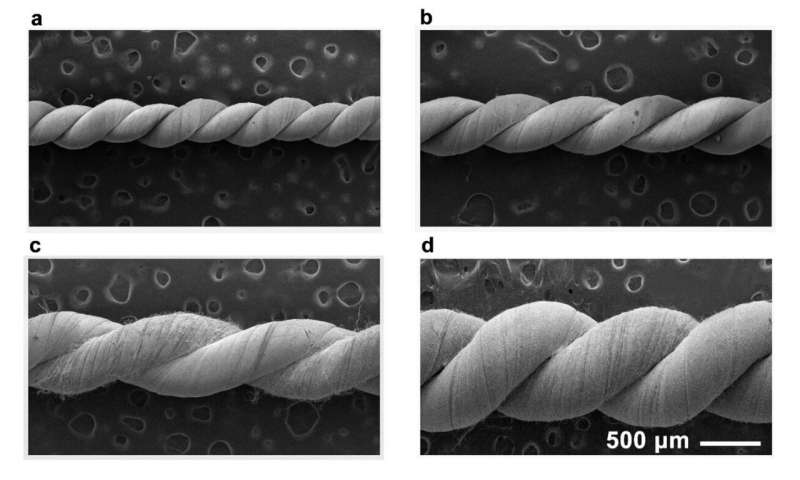In a remarkable feat of biomimicry, scientists have developed a yarn that can effectively harvest water from fog, offering a promising solution to the pressing global water crisis. Inspired by the water-collecting abilities of desert beetles and the transport mechanisms of spider silk, this bioinspired yarn showcases the power of nature-inspired innovation to address critical environmental challenges. By emulating the hydrophobic and hydrophilic patterns found in these natural systems, the researchers have engineered a scalable and highly efficient fog-harvesting technology that could be a game-changer for drought-prone regions.

Mimicking Nature’s Genius
This bioinspired yarn is successful because it replicates the natural water-harvesting mechanisms found in nature. The desert beetle has evolved to be able to acquire water from fog, and the researchers sought to mimic this in a surface structure with alternating hydrophobic (water repelling) and hydrophilic (capable of absorbing water) regions.
The one-dimensional spider silk, in the same vain as its fibroin counterpart, has also shown unique water-transporting behavior due to micro and nano dimensions that can collect and transport water with high efficiency. The incorporation of these design principles in the double-stranded yarn provides a structure that speeds the droplet generation and increases water transport, substantially boosting fog-collection efficiency.
While the work heralds quick thinking on behalf of the researchers, it also points toward bigger solutions in biomimicry for tackling challenging real-world problems. Looking to nature for guidance, the team of scientists has discovered a sustainable and practical fix to water scarcity that impacts millions around world.
Scalable way To Water Crisis
Researchers have developed highly efficient bioinspired yarn that could potentially solve the global water crisis, in remote and arid regions where fresh drinking water is scarce. Traditional approaches to attaining water from the air can be very costly and also with high energy requirements, but this groundbreaking yarn addresses these complications head-on.
The hydrophobic-hydrophilic patterned yarn precipitates the droplet to form faster and then directs them to transport and rain down, offering a striking collection rate of 3.20 g·h−1·cm−2 for controlled fogs. This performance level is considerably better than anything you could get from conventional methods that makes the yarn an interesting option in a fog-rich setting.
Another important feature is the yarn design scalability. This advance sets the technology apart from competing water-harvesting systems, which often have been made from relatively rare and not readily obtainable materials using complicated nanotechnologies such as vapor–liquid–solid acts or co-axial melt electrospinningwriting. If these materials and other similar alternatives prove to be cost effective and easily produced, it might mean the difference in how we currently approach water woes worldwide.
Providing Sustainable Water Solutions for Communities from DonDelay on Vimeo.
This new yarn, inspired by nature, seems to offer tremendous hope for the people in various parts of the world that face an acute water crisis. The yarn might play an important role in increasing access to clean water and enabling drought sensitive regions to become more independent; delivering a safe and reliable drinking water source.
The design flexibility of the yarn also offers adaptability to the specific requirements and local conditions of different communities, ensuring that it can be used in a wide variety of applications effectively. With scholars still working hard to improve and perfect the yarn for these purposes, one can only assume further evolutions in the world of atmospheric water harvesting are yet to come.
Moving beyond specific uses, this development is a symbol of the wider trend where nature offers solutions for global challenges. Scientists are using the knowledge gained from their exploration of nature to show how biomimicry can help to foster innovation, and ensure a healthier future for all. Even as we confront the monumental challenge of solving the water crisis, bioinspired yarn is an illustration of nature’s ability to transform how we think.
